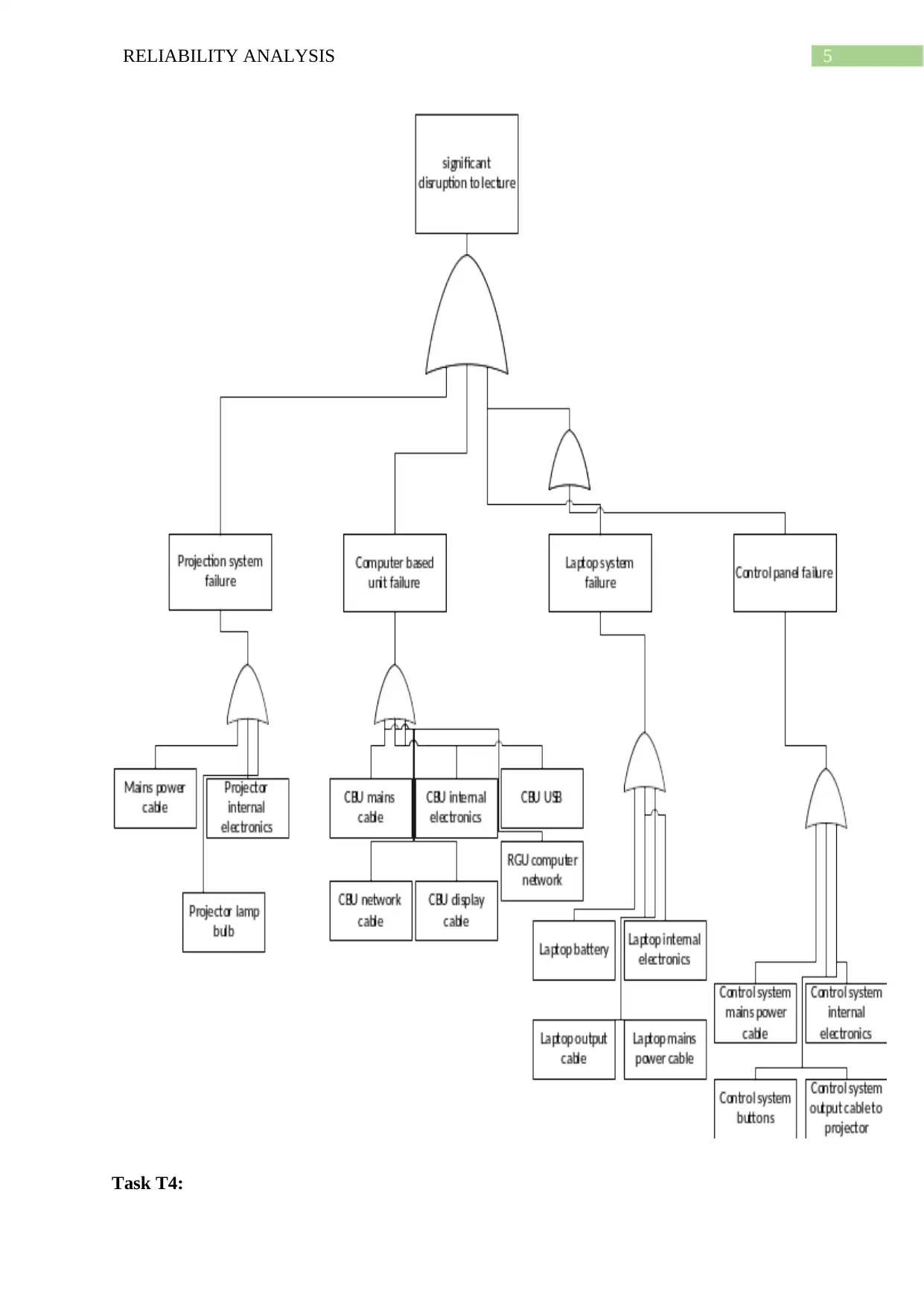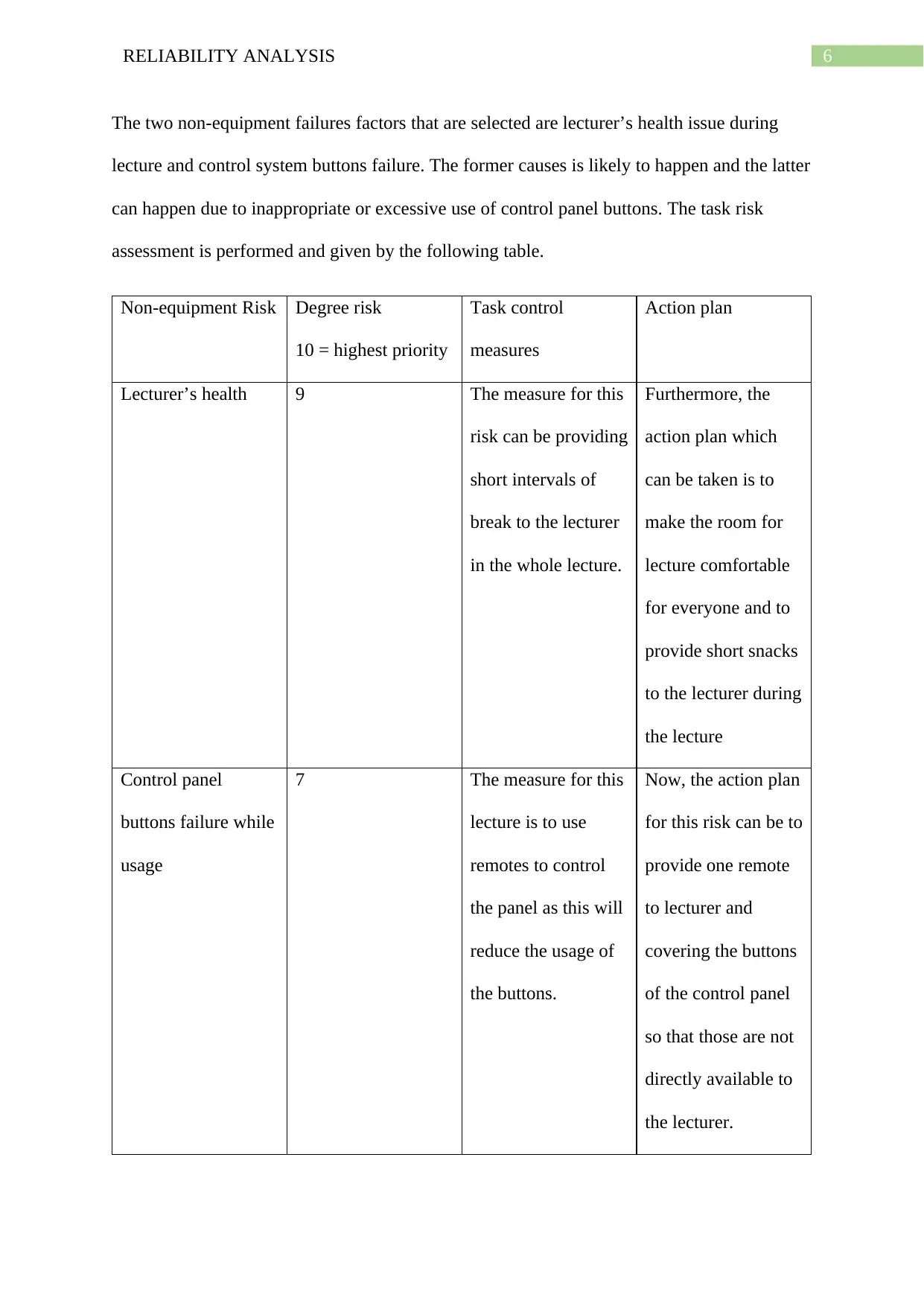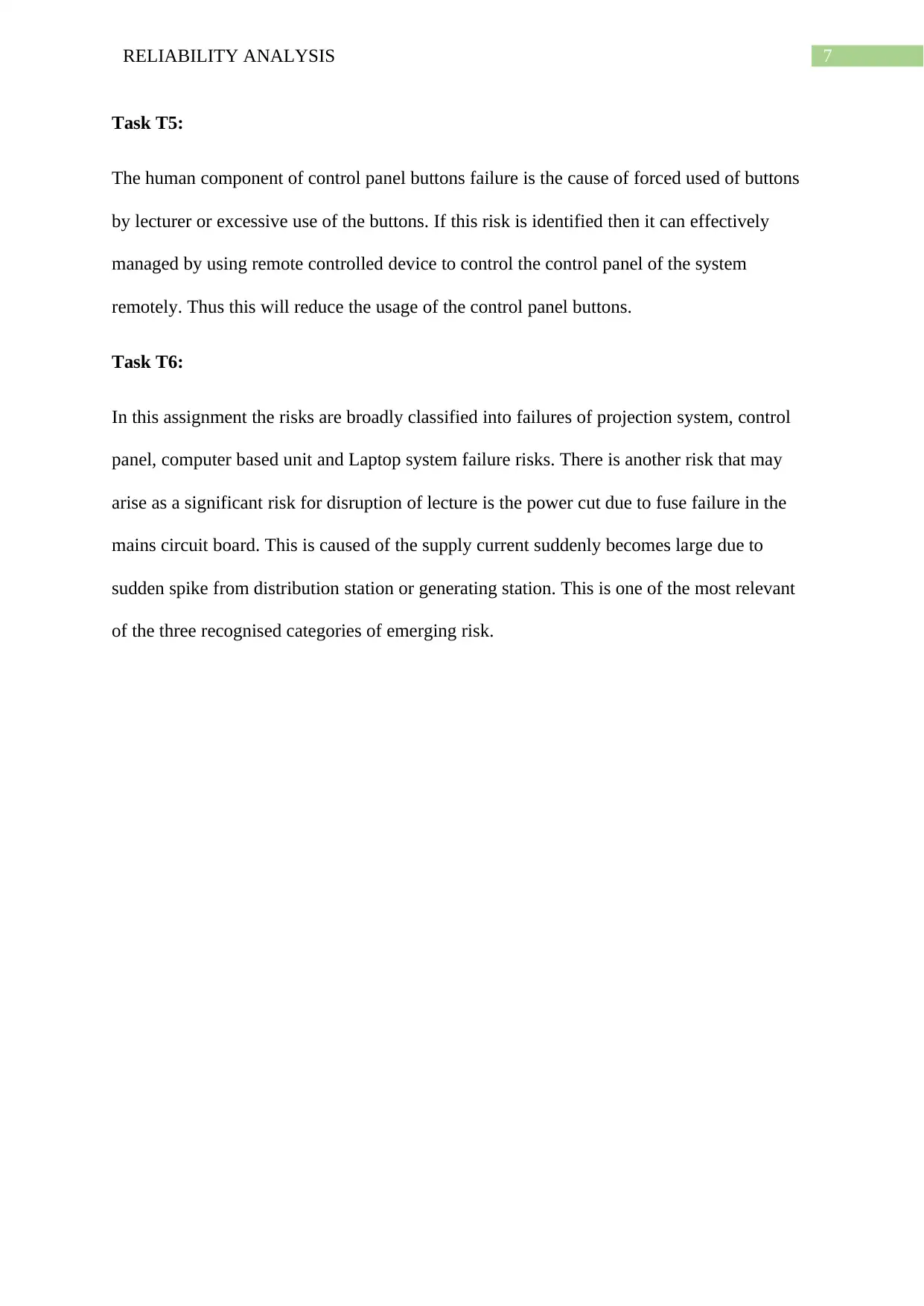Reliability Analysis of Projection System and Risk Assessment
VerifiedAdded on 2023/01/19
|8
|947
|61
Homework Assignment
AI Summary
This assignment addresses reliability analysis within the context of a lecture environment at Trebor Snodrog University. The student calculates the reliability of a projection system, considering its lamp, internal electronics, and power connection, using failure rates and reliability block diagrams. The assignment also includes Failure Mode and Effects Analysis (FMEA) for braking and drivetrain systems, identifying the most risk-prone components. A fault tree analysis is constructed to identify potential failure pathways. Furthermore, the assignment explores non-equipment failures, such as lecturer health issues and control system button failures, proposing risk assessment and mitigation strategies. Finally, the student discusses the human component of control panel button failure and recognizes potential lecture disruptions, categorizing them as emerging risks.
1 out of 8









![[object Object]](/_next/static/media/star-bottom.7253800d.svg)